Sherlock Review: The Abominable Bride
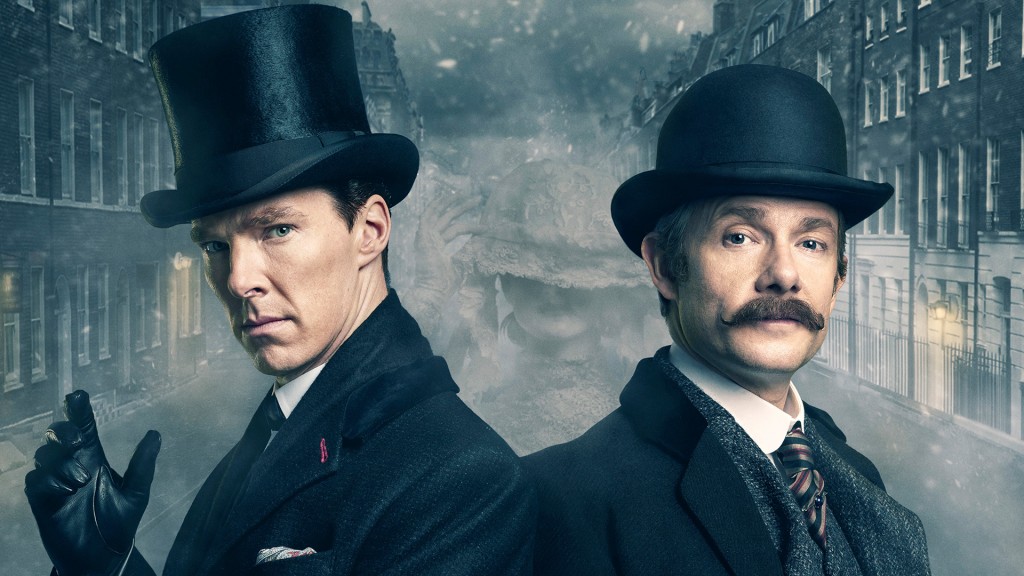
The Babes have a lot of thoughts, and while you can hear them in more detail in our podcast reaction episode, below we have two reviews of the Sherlock special for your reading pleasure.
England is England yet, for all our fears–
Only those things the heart believes are true.
—Vincent Starrett, 221B
The poem 221B by Vincent Starrett is treasured among Sherlockians for its final line, which reminds young and old that “it is always 1895,” but Sherlock’s first holiday special turns my mind to the lines above even more. The Abominable Bride is not really an episode about plot, though it has a good one, and it’s not about advancing the overall arc of the series very much. Instead, it’s about the things the heart believes are true, specifically the heart of Sherlock Holmes. Mycroft Holmes once asked, long ago, in A Scandal in Belgravia, “What might we deduce about his heart?” This episode answers that question.

In the early days of publicity, we were told that the story would be a complete one-off, fully Victorian and unrelated to the series arc as a whole. In recent days, a low-key change occurred, in which cast and showrunners began teasing a series connection after all. The episode began with a confirmation of this in the form of a montage showing the viewer a quick timeline of everything that has happened in the series so far, surely a strange choice if the episode wasn’t going to connect to it. Immediately after, however, we were thrown into an immersive Victorian world, complete with a Doyle-heavy origin story and new-old versions of our favorite characters (with the exception of Vinette Robinson’s Sally, whom I was sad to miss).
The case is brought by a mutton-chop-sporting Lestrade, who introduces Holmes and Watson to the Abominable Bride herself (played by the phenomenal Natasha O’Keeffe), a wedding anniversary murderess-suicide who somehow appears to have risen from the dead to kill her husband—and happens to have killed herself in the exact same way we saw Moriarty kill himself earlier in the series.
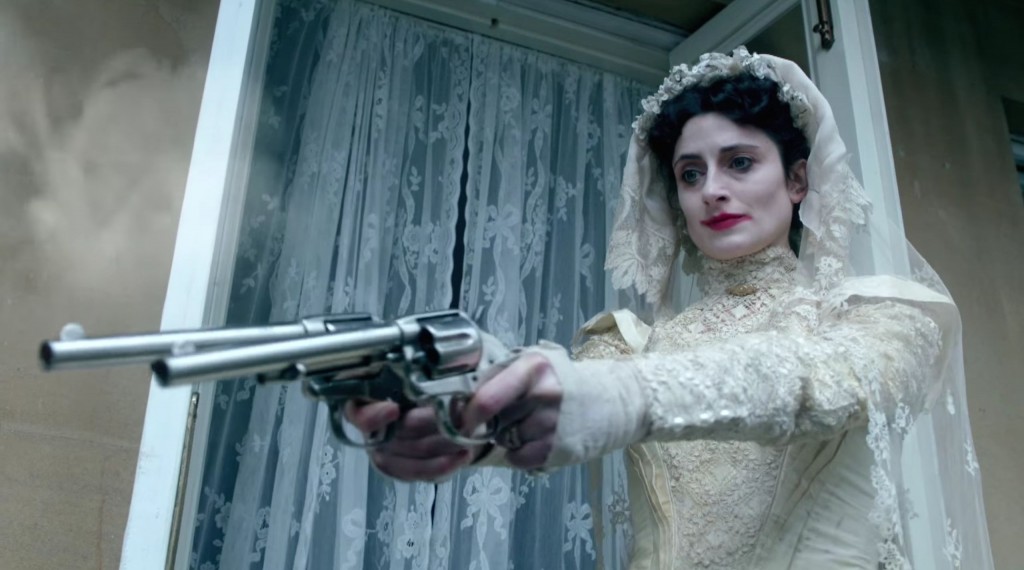
What follows is a fairly straightforward investigation that echoes both the style the BBC Series has established and Doylean canon tropes. Two reveals were particularly enjoyable—Mark Gatiss’s Mycroft, bearing the girth and sloth of Doyle’s version, and morgue director Molly in male disguise. At the same time as the case progresses, however, there’s an intrusive subplot that keeps weaving its way through—the female voice in the Victorian Era, with a frustrated Mrs. Hudson going on a silence strike, an angry Mary Watson taking employment without her husband’s knowledge, and a particularly outspoken maid. Hovering above all this is a cryptic tease by Mycroft about an unseen army that needs to win.
It all seems pretty straightforward until it doesn’t. Suddenly, the modern photo of Irene Adler surfaces, and characters begin speaking in increasingly anachronistic terms. The action sequence with the Bride seems like it should be climactic, but it really isn’t, and it’s not meant to be. A Victorian Mind Palace sequence culminates in a visit from Andrew Scott’s Moriarty at his creepy best, and the truth starts to emerge: The case isn’t about the case at all, and furthermore, it’s not even real—the whole thing is a drug-induced delve into Sherlock’s Mind Palace, an attempt to use an unsolved mystery to solve an all-too-modern one.
Knowing this Shyamalan-level twist changes the entire framing of the episode as a whole. No longer are we seeing a surprisingly clever Victorian John; we’re seeing the idea of Watson who lives in Sherlock’s brain. The same is true for each character, and, in turn, they reveal different aspects of Sherlock’s psychology.
The episode’s pre-climax takes place when Holmes unveils the Victorian feminist society that produced the Bride. I’ve seen various confusion and criticism about this, but it’s not a real thing, and it’s not meant to be seen that way. Again, it’s a part of Sherlock’s mind, the working-out of guilt over the women he’s wronged, a gallery led by Molly and including Janine, with whom he engaged in a fake romance. The scene has strong similarities to Sherlock’s courtroom Mind Palace from earlier in the series.
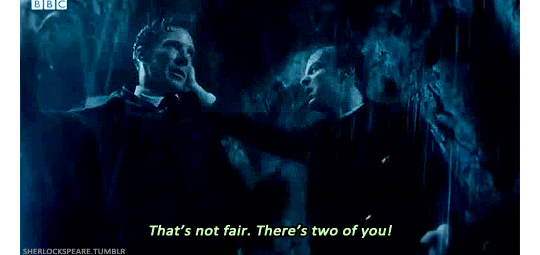
The true climax occurs when the Bride unveils herself and turns out to be Moriarty. As a modern-time, but still dreaming, Sherlock frantically digs up the real-life Bride’s grave to find two corpses (a reference to Lady Frances Carfax), he’s plunged into the canonical version of Reichenbach, a showdown with Moriarty on the edge of the falls.
Except, this time, it doesn’t end the same way. In an echo of long-ago episode A Study in Pink, Watson appears at exactly the right moment and kills Moriarty himself. This is entirely symbolic, Sherlock’s mind finally exorcising the ever-present Moriarty, who has come to represent his weaknesses, by realizing that he will never have to confront his failings alone because he has John by his side.
The end of the episode doesn’t tell us much beyond the fact that Holmes understands the next phase in the (truly dead) Moriarty’s plan and that he’s still using a drugs on occasion, a fact that deeply concerns his brother Mycroft, whose combination of care and anger throughout the episode was played beautifully by Mark Gatiss. We’re left on a cliffhanger, not in a very different place from where we began, but also worlds away from where we began.

Much as The Sign of Three explored the relationship between Holmes and Watson, The Abominable Bride explores Sherlock’s relationship to himself—his fear that he’s far less clever than he’d like to be, his ambivalence about his lack of conformity, and his deep-seated terror of weakness. Ultimately, the series stays absolutely faithful to its own heartbeat, allowing its protagonist to finally, and fully, realize that his hope lies is human connection and in the friendship of his Boswell. The Abominable Bride is the fulfillment of The Reichenbach Fall. The man who fell alone can now fly because he’s not alone any more.
Here dwell together still two men of note
Who never lived and so can never die
In the context of the series, the Victorian Holmes and Watson of The Abominable Bride never lived, but Starrett said it best: They still dwell together, seated by their Baker Street fire, where Sherlock’s heart, and mine, believe they will live forever.
Where do we even begin? It was an episode that gripped you by your stick on stache (or maybe yours is real?) and swung you around for one wild, wild ride. There was a bit of something for everyone whether you’ve read and studied the canon or you’re strictly following the story through the series; we laughed, we cried, and we wailed with emotion as this seemingly simple case got rather complicated. I’m not going to recap the episode, because we covered that in the podcast and one would assume you’ve actually seen it if you’re reading this. Instead, here’s what we liked, what was interesting, and the admittance that not a whole lot happened in Sherlock (but a whole lot DID happen for Sherlock).
The cinematography… goodness wasn’t it lovely? Many of us agreed that the close up on the Baker Street sign followed by panning out was reminiscent of the Granada series. I personally adored the overall colour tone, the deduction scenes were exquisitely shot and the use of typography in the BSL scene was fantastic. I felt it gave us a very nice mix of the modern Sherlock we’ve been familiar with to the classic Victorian Holmes.
During Sherlocked, we spoke with Arwel Jones, who (while he couldn’t really give much away) said that for him designing the set was all about adding in elements from his version of 221B, it was a bit challenging as many of the things on the modern set are already themselves items from the canon. He wanted to find a way to still stick to the canon while adding in his own touch to keep it “Sherlock”.
Both Arwel Jones and Danny Hargreaves shared some lovely behind the scenes photo’s showing off a bit of the SFX , like how they filmed the waterfall scene and the door with the stained glass(did you manage to catch all of the canon references?
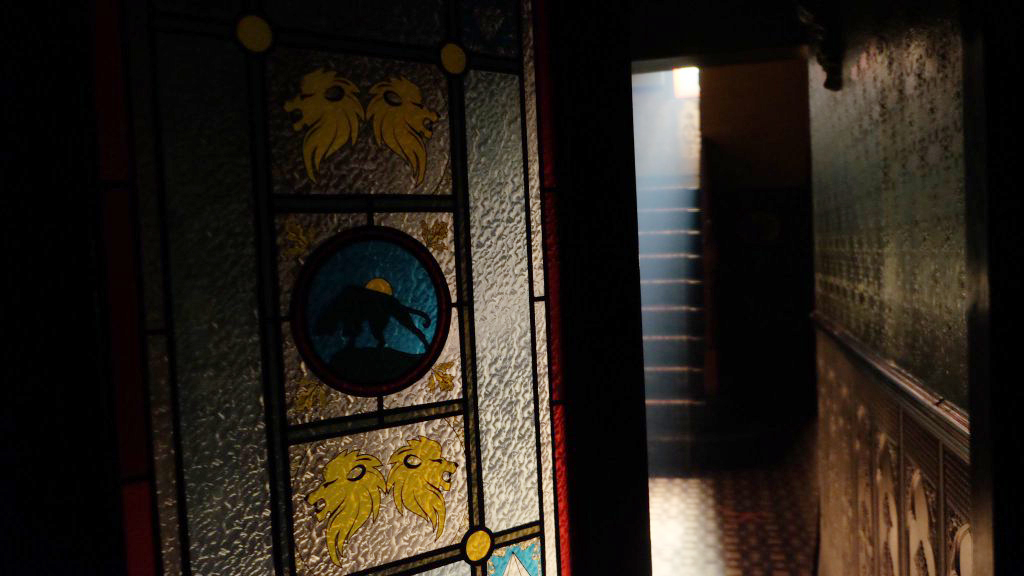
This episode once again took us into Sherlock’s Mind Palace, though this time around we went deeper than just its vast halls. We journeyed into the swirling storm that is Sherlock’s inner most private thoughts. Little did the viewers know until later, but Sherlock is high on a cocktail of drugs, turning over an old case to help him cope with the seeming return of his arch nemesis James Moriarty. In many ways this episode gave us a fantastic view on how Sherlock feels towards certain people and, perhaps more importantly, how he sees himself. “To know the depth of loyalty and love that lay behind that cold mask” is what we got to see in this episode. Sherlock is not the rude, cold and cruel person he would have us all think.
As far back as The Hounds of Baskerville, we have known that if there is anyone that Sherlock fears, it’s Moriarty. During His Last Bow we further saw the effect that this Napoleon of Crime had on Holmes and how he still haunts him. In a way he is a devil, a demon that nips of Sherlock’s heels and at times drives Sherlock to do frankly extraordinary things (like coming back to life because John Watson was in danger).

John. John Watson. Many times overlooked due to the dazzling brilliance of our infamous detective, nut Sherlock would be lost without him. I think that fact exactly was strongly represented in the episode. What we learned was that Sherlock believes John to be much more intelligent than he lets on in the real world. Some could argue that John might even hold back to allow Sherlock the chance to shine. Sherlock said during the Sign of Three that John Watson saved him, and during the scene where he struggled with his greatest demon, Moriarty, it was John Watson that came to the rescue. While Moriarty is Sherlock’s weakness, John is his strength.
Despite a humorous riff on the canon appearance, our understanding of Mycroft’s care of his younger brother was highlighted in this episode. Mycroft cares very deeply for Sherlock (he worries about him… constantly) and in ABOM we got to see just how much the “Ice Man” cared. Sherlock was using again, in fact, it would seem that Sherlock has been using for a while now. And it was heartbreaking when Mycroft asked for the list, when we saw how familiar he was with this dance. He even went as far as asking John, one would say even pleading with him, to watch over Sherlock. Also would like to take this time to appreciate how the Sherlock creators aren’t shying away from drug use in the show again and being respectful of it, both from an addict’s point of few and of a carer’s. Well done.
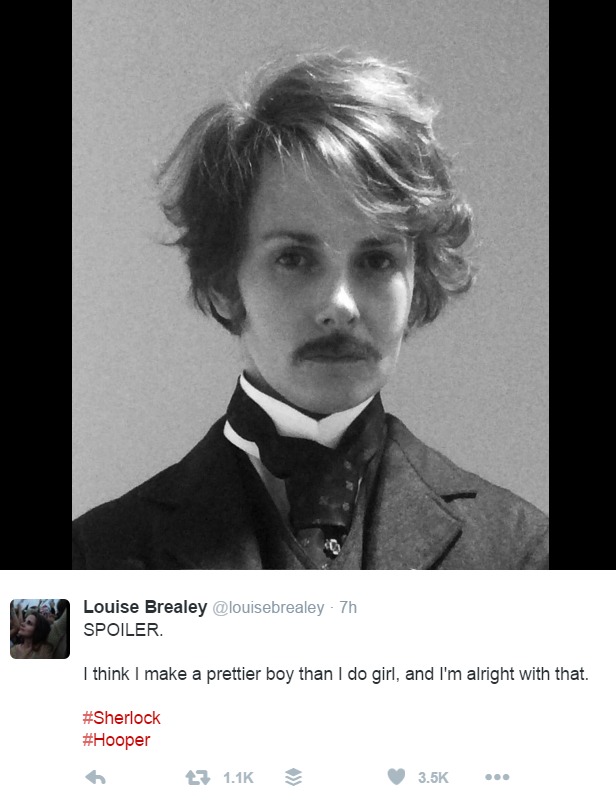
The women, oh the women. They shined in this episode. And let’s talk about Molly. I was genuinely curious on how she would appear since I knew that in that time women were not afforded such rights. Examples of these were abound, but specifically Mary’s disgust at being left behind while her husband ran off with Sherlock to solve crime and Mrs.Hudson’s indignation at being made a silent character in Mind Palace John’s stories. But Molly disguising herself as a man to be taken seriously as a doctor had us applauding. Also, cute stache. All of it was wonderful. But what intrigued me most was when the women all took their hoods off and some where shown to be the women that Sherlock had wronged in the past. Janine was there, and it would seem that Sherlock does feel very bad for how he treated her. As we said in our podcast, it was almost a room of “Moffat apology” for the treatment of women in the series so far, and as we said, he’s getting there.
This episode seemed more to be an exploration of Sherlock’s inner feelings and thoughts and as such there was little to drive the plot further. As one Twitter user tweeted: The Abominable Bride was 90 minutes of Sherlock getting off a plane and into a car. And that’s a fair criticism. On the other hand that wasn’t the purpose of the episode. The special felt more an analysis of Gatiss and Moffat’s version of Holmes more so than anything and a psychological look into the character itself. That being said, it does provide us with a link to the next series; Moriarty is definitely dead, but his name lives on. There is a great deal you can do with a name, and that may be more terrifying than the man himself. After all, as is apparent in today’s world, fear creates monsters.
So what does this mean for Series 4?
You can listen to our podcast discussion of The Abominable Bride below!

Amy Thomas is a book reviewer, freelance essayist, and author of The Detective and The Woman mystery novel series featuring Sherlock Holmes and Irene Adler, published by MX Publishing. She holds a degree in professional communication and is an avid knitter, geek, and grammar nerd. Amy blogs about Sherlock Holmes at Girlmeetssherlock.wordpress.com and can be reached for professional enquiries at nottinghillnapoleon@gmail.com. Connect with her on Twitter @Pickwick12.
Do you mind if I quote a few of your posts as long as I provide credit and sources back to your weblog? My blog site is in the very same area of interest as yours and my users would genuinely benefit from a lot of the information you provide here. Please let me know if this ok with you. Thanks!